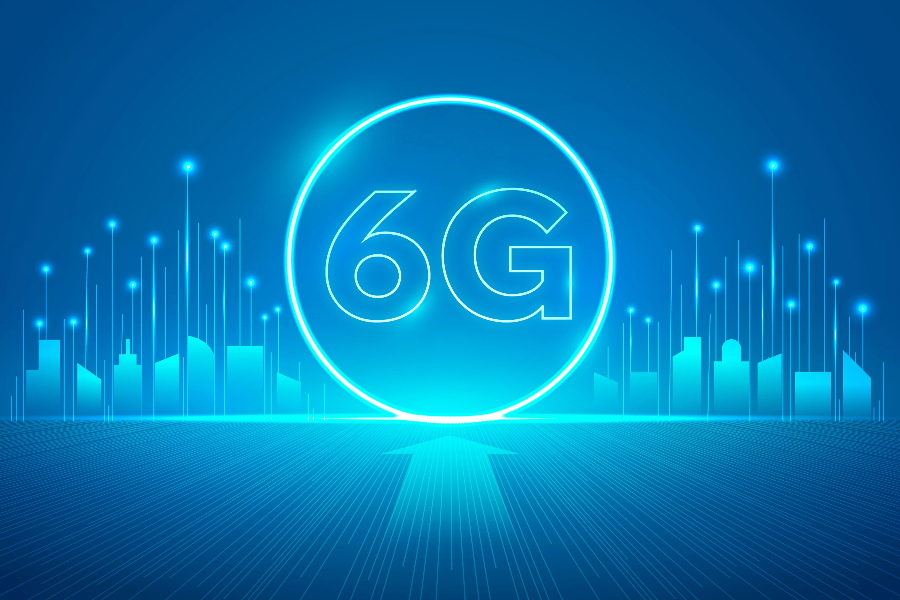6G: The Future of Wireless
The fifth generation of cellular network technology (5G) is still in its early stages of deployment, but the research and development of 6G is already underway. 6G is expected to be significantly faster and more reliable than 5G, with theoretical data rates of up to 1 terabit per second (Tbps). It will also have lower latency, meaning that data will travel between devices more quickly.
Here are some of the key features of 6G networks
Terahertz (THz) frequencies: 6G networks will use THz frequencies, which are a type of radio waves that have a wavelength of about 1 millimeter. THz waves are much shorter than the waves used by 5G, which means that they can carry more data. However, THz waves are also more difficult to transmit and receive, so 6G networks will need to use new antenna designs and signal processing techniques.
Artificial intelligence (AI): AI will be used to optimize the performance of 6G networks, such as by managing traffic and ensuring that data is delivered reliably. AI will also be used to develop new 6G applications, such as augmented reality and virtual reality.
Massive MIMO: Massive MIMO is a technology that uses a large number of antennas to transmit and receive data. This allows 6G networks to support a large number of devices and connections.
Network slicing: Network slicing is a technology that allows 6G networks to be divided into smaller, dedicated networks. This allows different types of traffic, such as video streaming or industrial automation, to be prioritized and managed separately.
Security: 6G networks will need to be highly secure in order to protect sensitive data and applications. 6G networks will use a variety of security measures, such as encryption and authentication, to protect data from unauthorized access.
Ultra-reliable low latency communication (URLLC): URLLC is a type of communication that guarantees very low latency, even in crowded networks. This makes it ideal for applications such as self-driving cars and remote surgery.
Massive connectivity: 6G networks will be able to support a massive number of devices, such as billions of sensors and actuators. This will enable new applications in the Internet of Things (IoT) and Industry 4.0.
Integrated intelligent reflecting surfaces (IIRS): IIRS are a new technology that can be used to reflect and amplify radio waves. This can be used to improve the performance of 6G networks, especially in areas with poor signal reception.
Here are some of the potential use cases for 6G networks
Ultra-high-definition (UHD) video streaming: 6G networks will be able to support UHD video streaming with minimal buffering or lag. This will make it possible to watch live sporting events or concerts in high definition, even when you are not at the venue.
Virtual reality (VR) and augmented reality (AR): 6G networks will be able to support VR and AR applications with low latency and high bandwidth. This will make it possible to experience immersive virtual worlds or overlay digital information in the real world.
Self-driving cars: 6G networks will be able to provide the high-speed, low-latency communication that is needed for self-driving cars to operate safely. 6G networks will also be able to support the large number of sensors that are needed to make self-driving cars work.
Remote surgery: 6G networks will be able to support remote surgery with high-quality video and data transmission. This will make it possible for surgeons to operate on patients from a remote location.
Industry 4.0: 6G networks will be able to support the high-speed, reliable communication that is needed for the next generation of industrial automation. This will help to improve efficiency and productivity in factories and other industrial settings.
Environmental monitoring: 6G networks can be used to monitor the environment for pollution, climate change, and other threats. This data can be used to improve our understanding of the environment and to develop solutions to environmental problems.
Tactile Internet: The tactile Internet is a new concept that will allow people to feel the touch of others through the Internet. This could be used for applications such as virtual reality, telehealth, and gaming.
Brain-computer interface (BCI): A BCI is a device that can translate brain signals into commands that can be used to control computers or other devices. 6G networks could be used to improve the performance of BCIs, making it possible for people with disabilities to control their environment more easily.
Working on 6G
Companies: Apple, Ericsson, Huawei, Nokia, Samsung, and Qualcomm
Countries: China, India, Japan, Russia, and the United States
Research institutes: Technology Innovation Institute and the Interuniversity Microelectronics Centre
Source:
- https://incompliancemag.com/article/the-6g-future-how-6g-will-transform-our-lives/
- https://www.cisco.com/c/en/us/solutions/what-is-5g.html
- https://www.ericsson.com/en/6g
- https://www.techtarget.com/searchnetworking/definition/6G
- https://www.bitsathy.ac.in/mathematics-in-artificial-intelligence-chatbots/

